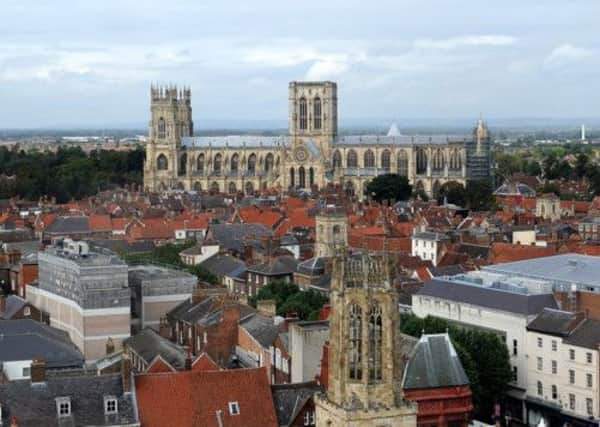‘Watershed’ as York planning blueprint unveiled


The 15-year planning vision was today unveiled by York Council and includes ambitious targets to build more than 20,000 homes while 20 sites have been identified for economic development which could bring as many as 16,000 new jobs to the city.
The leader of the council, Coun James Alexander, has claimed that the proposed strategy represents a “watershed” for the city, although he admitted that the scale of development would prove controversial for many of the city’s residents and political opponents.
Advertisement
Hide AdAdvertisement
Hide AdCoun Alexander said: “There is a moral obligation for us to look to provide enough housing for the city’s residents, not just those who live here now but for future generations as well.
“To those residents who say that we should not be building homes on this scale, I would simply ask them where they would like the houses to be built for their children and other people who simply cannot afford to buy in the city.
“We are faced with people moving to other places like Selby and Leeds because they can’t afford to rent or buy a home in York. The city’s economy is flourishing, but we need to address the lack of homes to ensure that it continues to do so.”
The council has stressed that linking housing and employment growth is a critical element of the new plan and a target has been set to build 1,090 homes per year to help accommodate an increase in the city’s population of 40,000 over the next 15 years.
Advertisement
Hide AdAdvertisement
Hide AdHouse-building in the city has fallen dramatically from a high in 2005, despite the city being one of the fastest growing locations in the country.
Coun Alexander admitted that the new house-building targets are ambitious, especially as only 321 new homes were completed last year. But he was adamant that the construction will pick up significantly once the economy revives, and stressed developers have told the council they are willing to build properties if sites are made available.
The scale of the affordable housing crisis has been illustrated by the latest data from the National Housing Federation which has revealed the average property price in York was £201,331 in 2011 compared to the regional average of £155,303.
A total of 20 employment sites have also been identified for future development over the 15-year lifespan of the new Local Plan up until 2030 including one of the largest brownfield sites in the country, York Central which encompasses redundant land around the city’s railway station.
Advertisement
Hide AdAdvertisement
Hide AdThe city centre has also been earmarked for the economic development, although the draft Local Plan highlights the need to maintain the city’s world-famous heritage. The Monks Cross retail district on the fringes of the city has also been identified as a major site for economic development.
Two sites have been identified for the majority of the housebuilding programmes, with Holme Hill to the south-east of York having the potential for 5,580 new properties over the next 25 years. Clifton Gate to the north of Clifton Moor has been earmarked for 4,020 new homes over the next quarter of a century.
An eight-week consultation will be conducted between May and June once the draft Local Plan has been approved by the council later this month. A further consultation will be held early next year once any changes have been made, and a final version will be sent to the Government for approval in late 2014.
If it is approved by Ministers, the Local Plan will be put in place in 2015, making it the first city-wide development brief to be adopted since 1956.
Advertisement
Hide AdAdvertisement
Hide AdThe draft Local Plan has been published after an initial city-wide planning brief in York had to be abandoned in May last year following concerns over its viability which were raised by a Government planning inspector.
The Yorkshire Post revealed in February that York’s taxpayers will have to pay £650,000 for the revised plan while the Labour-run council attempts to slash £20m from its budgets and shed 240 jobs to counter the Government’s funding cuts over the next two years.